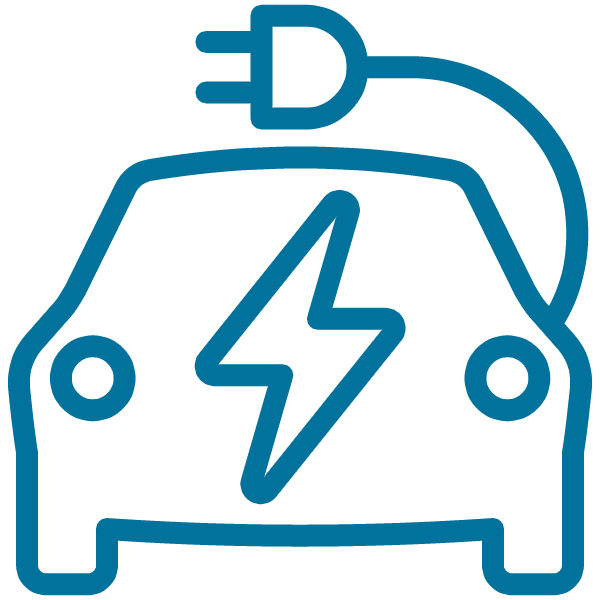With a new presidential administration taking office, automobile dealers anticipate U.S. regulatory changes but still expect steady growth in consumer interest in electric vehicles (EVs) and hybrids.
�This belief coincides with efforts by retailers to adjust their operational strategies to accommodate both virtual and in-person sales, strengthen data privacy and security protections, step up educational activities for both consumers and staff and adapt their services to the ever-evolving demands of the marketplace. Amid high inventory and some consumer dissatisfaction with the vehicle-purchasing process, dealers are reevaluating everything from how they acquire vehicles and manage inventory levels to how and when to offer test drives.
Data from the Urban Science survey indicates that Generation Z (18-26 years old) increasingly values the role automobile dealerships play in the purchase and after-sales process, with the Dealer Relevance index score increasing 7 points over last year. This rapidly growing interest is vital for dealers in the current market environment, plagued by high vehicle inventory levels and cautious lending practices. Unlike some consumer groups, Gen Z shows a stronger interest in car ownership, enjoys favorable credit scores and has the financial means to buy or lease.
Notably, 51% of Gen Z respondents feel dealerships have the tools and technology to simplify buying, compared with only 42% of millennials, 35% of Gen Xers and 44% of baby boomers. While Gen Zs view dealers as integral to car buying, they also indicate heightened interest in nontraditional platforms such as CarMax and Carvana, with 74% open to exploring these options when making their next vehicle purchase.
Fueling Dealer Success in 2025
The latest Urban Science and Harris Poll dealership survey offers clear-cut pathways to boosted sales, revenues.

Supported by
Executive Summary

Gen Z: Key Insights for Dealers
Learn More

With average U.S. vehicle ownership reaching a record 12.6 years, demand for automobile repair and servicing continues to surge. Amid economic volatility and fluctuating new-vehicle sales, maintaining a strong service department is now more critical than ever for dealerships. Notably, 46% of auto buyers strongly prefer servicing their vehicles at the dealership of purchase, driven in part by perceived quality.
�Convenience is another key factor driving owners back to dealerships for upkeep on their vehicles, with many consumers prioritizing service locations near their homes or workplaces. 41% of auto buyers surveyed, up 6% last year, believe that dealership service departments provide unique value over an independent repair shop.”�
Keeping Service Levels High for Consumer Retention
Learn more about Dell Technologies solutions
Automotive Hub
Automotive Hub
Register for the Webinar
Register for the Webinar
Download Resources

Read Blog
Read Blog
Read Blog
Read Blog

© 2025 Informa USA, Inc., All Rights Reserved | Privacy Policy | Terms of Service
A 2024 Urban Science survey conducted by the Harris Poll* sheds light on consumer and dealer expectations, presenting dealers and automakers with insights that can help them optimize sales, service and overall customer engagement. Read on to learn more about some of the study’s critical findings that can fuel dealership success in 2025.

Dealers Using AI Report Better Lead Management and Targeting; However, Many Are Concerned About Data Privacy, Costs, and Integration Complexity
Download White Paper
Read Blog
Read Blog
Download White Paper
Learn more about Dell Technologies solutions


Artificial Intelligence (AI) is reshaping dealership operations, enhancing lead management, customer targeting and overall sales efficiency. Sixty-four percent of dealers surveyed say they already use AI to streamline the sales process, even though some consumers remain apprehensive about AI when it comes to purchasing and operating their new vehicles.
�While AI adoption is gaining traction, dealers continue to face challenges, with 50% citing data privacy and security concerns and 45% pointing to high implementation costs. Some consumers say they remain apprehensive about AI when it comes to purchasing and operating their new vehicles. The promise may outweigh the risks and hurdles, however, as AI can facilitate more-efficient lead conversion, customer segmentation and routine task automation, empowering dealership staff to provide a more personalized service to prospective buyers.

Urban Science: Our unrivaled near-real-time industry sales data, and consulting and technology offerings, have driven innovation, efficiency and profitability in every corner of the automotive industry. Our capabilities and industry expertise help OEMs and dealers and the advertising technology firms that support them, stay ahead of industry trends and achieve business certainty in even the most chaotic market conditions.
Read Blog
Read Blog




Dealers Who Tune Into Customer Preferences Can Score Major Payoffs
Dealers Can Keep
Service Booming
A Roadmap for Dealers to Win Over Millennial Buyers
Dealers, Customers See Positives in Megadealer Trend

Driving Your Dealership Ahead with Artificial Intelligence


How Dealers Can Respond
Optimize the full customer journey, from inquiry to post-purchase service. Urban Science’s AI-driven solutions, such as predictive modeling and sales insights, can boost dealer performance significantly by providing accurate demand forecasts and innovative personalized-service strategies.

Collaborate with trusted vendors for seamless AI adoption.

To maximize AI’s benefits, dealers should implement a structured plan closely aligned with business goals and supported by expert partners. While AI can drive higher efficiency, it requires dedicated training and integration with the dealership’s CRM systems to succeed. Urban Science advises dealers to:
How Dealers Can Bolster Their Service Offerings
Dealers should leverage tools such as Urban Science’s ServiceView to analyze their back-end operations performance and identify areas opportunities for improvement. This platform allows dealers to gain actionable insights from service data and optimize customer experiences. Dealers who enhance service engagement also often see a rise in new-vehicle sales opportunities coming from loyal service customers.


Learning from Today’s EV Owners
Though adoption has been gradual, EVs are becoming a mainstream force, with one in five vehicles sold featuring an electric powertrain. In fact, despite recent negative news about the future of EVs, sales continued to climb in 2024, rising 33.9% above 2023 levels. The highest growth in demand for electrified vehicles is coming from hybrids, which recorded a 43.6% sales jump year over year.
�While some consumers remain hesitant to move away from internal-combustion-engine (ICE) vehicles, EV interest is particularly strong among younger buyers, such as Gen Zs and millennials.�
EV Owners View Dealers as More Relevant Than ICE, Highlighting Need for Enhanced Dealer Engagement in the Electric Car Market
The dealer’s role in EV adoption is indispensable with 53% of EV owners saying dealers are essential to the sales process, compared with 41% of ICE vehicle owners. That gives dealers a pathway to tap into emerging markets, solidify relationships with existing customers and ensure EV buyers receive the guidance they need.


53%
EV Owners Say Dealers are Essential
The Urban Science survey data reveals a gap between dealer and consumer perceptions of EV readiness, however. While 62% of dealers feel prepared to support EV adoption, only 47% of EV owners agree dealerships are fully up to speed. Converting buyers to consider EVs will require knowledgeable staff, EV-ready facilities and alignment across dealership teams, the survey indicates.�

To address consumer concerns such as EV range anxiety and recharging time, dealers should prioritize education and focus on data-driven strategies to better understand local demand. By collaborating with tech providers, dealers can optimize inventory and target marketing efforts, positioning themselves as leaders in the EV market.
How Dealers Can Overcome Barriers to EV Adoption

Incentives, Even Those as Low as $35, Continue to Have a Strong Impact on Auto-Buyer Motivation, From Test Drives, To Considering New Vehicles
Converting Hard-Earned Leads into Sales
Even when a shopper walks away following a test drive it can be a win for the dealer. The interaction presents a valuable learning opportunity that can help improve your sales process, refine your outreach to prospective customers and better align your training programs with customer expectations. Gathering insight into why a shopper has turned to another brand or dealer can be valuable intelligence that can lead to future wins.
Following a period of inventory shortages, dealers now face a cautious market influenced by high interest rates and affordability concerns. Consumers’ primary purchase considerations include the price of the new car or truck, the dealership’s reputation and the trade-in value of their current vehicle.
�Incentives, even modest ones, can entice potential buyers, as shown by consumer data indicating that 83% of auto buyers would consider a test drive for a $35 incentive. In fact, a major OEM offered a $50 test drive on an EV model and was able to increase their lead volume by 25% — and 17% of those leads converted to a sale over a five-month period.**�


Additional incentives can be used to further improve close rates and reduce the number of sales lost.
View Data
Using Defection Insights to Improve Close Rates and Grow Share
View Data

Economic pressures have not slowed consumer engagement, with 86% of dealers predicting that, although they may alter their purchasing plans, consumers are likely to remain active in the market. As competition for those buyers increases, incentives, test-drive promotions and targeted financing options can become powerful tools for drawing customers to the showroom.
�Dealers surveyed in a separate study by Urban Science indicate they are focusing on quality lead generation in the current environment, especially given that high-income leads show higher defection rates. Incentives tailored to in-market buyers can help reduce defection, move difficult inventory and reinforce engagement throughout the buyer’s journey.
�SalesAlert, a customer-relationship management solution from Urban Science, is a practical way for dealers to narrow down quality leads, because it gives sales people more time to work the in-market leads they have in their system. Salespeople spend a significant amount of time per lead — 3-5 minutes according to those surveyed by the Harris Poll, so making sure that’s time well spent is key to dealership productivity.
The Best Way for Dealers to Follow Leads



Building Dealer Success Strategies
Here are key steps dealers can take to maximize EV sales:
1. Understand Local Markets
Dealers should analyze regional demand and charging infrastructure to tailor inventory and strategies. Balancing hybrid and EV offerings ensures alignment with local adoption trends.
Using data analytics, dealerships can identify likely EV or hybrid buyers and create personalized campaigns addressing specific concerns, such as potential financial incentives and other purchase promotions.
2. Employ Targeted Marketing
Educate customers about long-term savings, including tax rebates, lower maintenance costs and fuel savings, shifting focus from upfront costs to lifetime benefits.
3. Emphasize the Overall Value Proposition
Encourage EV familiarity with extended test drives or loaner programs. Offer incentives such as rebates or competitive financing to ease the transition for hesitant buyers.
4. Offer Test Drives and Incentives
A knowledgeable team is crucial. Educating sales and service staff about EV technology empowers them to build customer confidence. Dealers confident in the EV market must align strategies across their teams, ensuring staff and customers share their enthusiasm. By combining sales, service and education, dealerships can lead the charge in a dynamic, electrified market.
5. Upgrade Staff Training
Moving Into 2025
Dealers have a unique opportunity to adapt to a dynamic marketplace.
�By leveraging AI, prioritizing service excellence, preparing for the EV transition and implementing targeted incentives, dealers can meet evolving consumer needs, strengthen customer loyalty and enhance overall profitability.
�The strategies highlighted in the Urban Science/Harris Poll survey underscore the importance of flexibility, technology adoption and data-driven decision-making in navigating today’s automotive retail landscape.�
*This survey was conducted online by The Harris Poll on behalf of Urban Science among 3,005 US adults aged 18+ who currently own or lease or plan to purchase or lease a new or used vehicle in the next 12 months (referred to in this report as “auto-buyers” or “auto-buying public”), and 250 U.S. OEM automotive dealers, whose titles were Sales Manager, General Manager, or Principal/VP/Owner.
�The auto-buying public survey was conducted from January 4 to February 13, 2024. Data are weighted where necessary by demographics to bring them in line with their actual proportions in the population. The dealer survey was conducted January 5 to February 7, 2024. Results were not weighted and are only representative of those who completed the survey.
�The sampling precision of Harris online polls is measured by using a Bayesian credible interval. For this study, the sample data is accurate to within ±2.3 percentage points for US auto-buyers and ±6.2 for U.S. OEM automotive dealer using a 95% confidence level.
�For complete survey methodology, including weighting variables and subgroup sample sizes, please contact Amy Bowering (arbowering@urbanscience.com).
�* Data Source: Urban Science Q4 Electrified Retail Sales Report. Data as of 1/6/2024.�** Data Source: Urban Science 2024 data campaign analysis over the course of 5 months.







Methodology



Converting Hard-Earned Leads into Sales
Learning from Today’s EV Owners
�Keeping Service Levels High for Consumer Retention
�Driving Your Dealership Ahead with Artificial Intelligence
Executive Summary
1
2
3
4
5
Gen Z’s desire for flexibility in the buying process and openness to making the switch to EVs provides dealers with a unique opportunity to reach new customers. In fact, 83% of Gen Z auto buyers report that an incentive as modest as $35 would motivate them to test drive an EV.

Maintain a consultative sales environment.

Offer omnichannel shopping options, balancing online and in-person experiences.

Emphasize EV options, as Gen Z is willing to pay a premium for EVs, with 56% stating they expect to be exclusively EV purchasers by 2030.

Dealers can win over Gen Zs by adopting strategies that emphasize flexibility, technology integration and hybrid sales models. To attract Gen Z buyers, dealers should:
How Dealers Can Satisfy Gen Z Consumers
Win or Learn, Never Lose
Explore Case Study
Explore Case Study
Turning Today’s Losses, into Tomorrow’s Sales
Motor City Buick

With a new presidential administration taking office, automobile dealers anticipate U.S. regulatory changes but still expect steady growth in consumer interest in electric vehicles (EVs) and hybrids.
�This belief coincides with efforts by retailers to adjust their operational strategies to accommodate both virtual and in-person sales, strengthen data privacy and security protections, step up educational activities for both consumers and staff and adapt their services to the ever-evolving demands of the marketplace. Amid high inventory and some consumer dissatisfaction with the vehicle-purchasing process, dealers are reevaluating everything from how they acquire vehicles and manage inventory levels to how and when to offer test drives.
This belief coincides with efforts by retailers to adjust their operational strategies to accommodate both virtual and in-person sales, strengthen data privacy and security protections, step up educational activities for both consumers and staff and adapt their services to the ever-evolving demands of the marketplace. Amid high inventory and some consumer dissatisfaction with the vehicle-purchasing process, dealers are reevaluating everything from how they acquire vehicles and manage inventory levels to how and when to offer test drives.